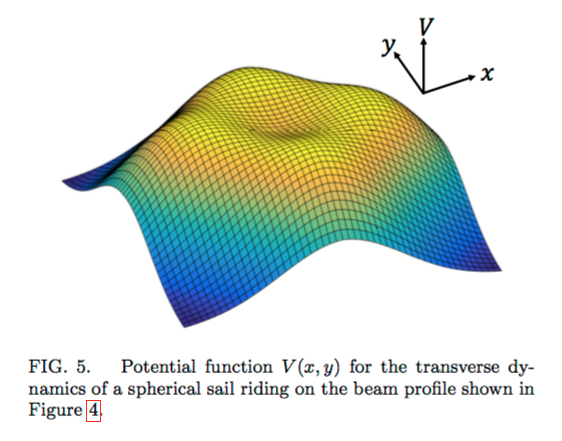Today on the ArXiv: How to ride a light beam to the stars, and how not to analyse distance indicators
Today on the arXiv, a nice analysis of how to design a solar sail in such a way that the light beam powering it is prevented from rocking it side to side, and hence destabilising it. The key idea is to use a spherical sail (rather than conical designs as previously proposed) and a multi-modal laser beam profile. The figure below illustrates how the resulting potential “traps” the beam in the centre, thereby self-stabilising the sail (at least, insofar as the the linearised analysis presented in the paper is valid – the authors show that this withstands a 10% white noise).

From Manchester and Loeb (2016), ArXiv: https://arxiv.org/pdf/1609.09506.pdf
This paper uses a compilation of distance indicators, including SNIa, cosmic clocks, BAO and GRBs to measure the expansion history of the Universe in a semi-parametric way. I was disappointed to see the likelihood treated in the usual (incorrect) Gaussian way, especially for SNIa’s and (even more so!) for GRBs. Somebody needs to do a proper analysis of this one day (hint, hint). The SNIa’s part is solved, and here’s how to do it right.

